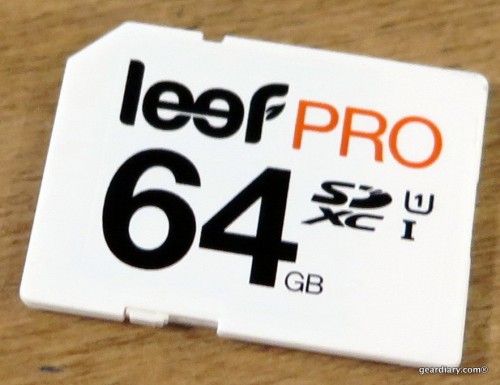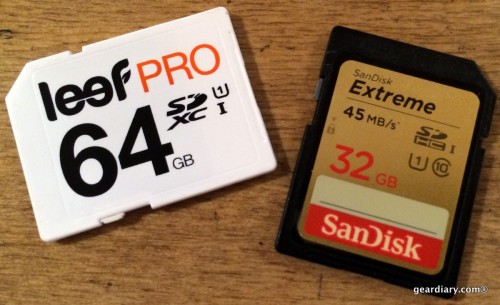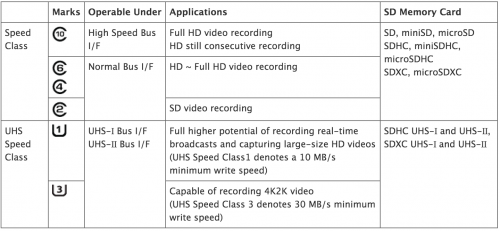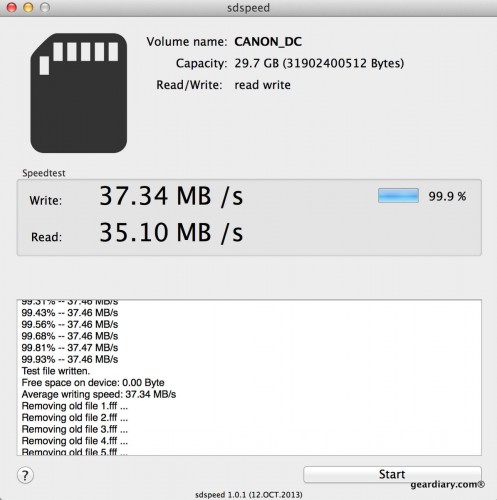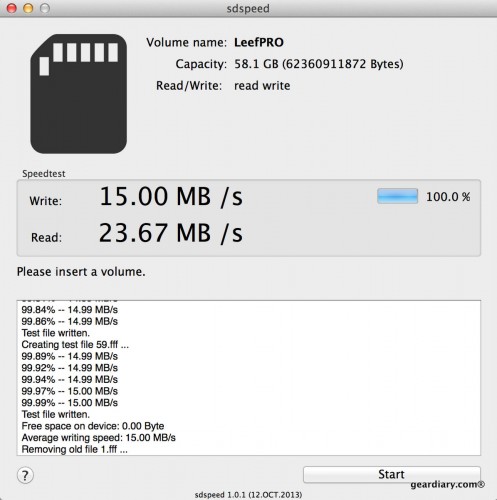One of the gifts I received from my husband Kev for Christmas was a Canon G16; he included a 32GB SanDisk Extreme SD Card and a spare battery — totally sweet, right? Around the same time, a 64GB Leef PRO SD Card showed up for review; comparisons were begging to be made, and I couldn’t help but make them …
I think the Leef PRO card looks better, but I get that there is only so much you can do in an area the size of a postage stamp. I like the simple, stark design, and compared to the stodgy styling of the SanDisk sticker, the Leef PRO is fresh and modern. But once the card is in your camera or video recorder, how it looks is obviously no longer relevant, right?
So which is the better card? Or are all SD cards about the same? I honestly wasn’t sure about all of that, so I had to get a mini education. Let’s start with the little symbols on the front of each SD:
The SanDisk Extreme card has the symbol indicating that it is a Class 10, high-speed card capable of full HD video recording and HD still consecutive recording. The Leef PRO does not have that symbol.
Both cards have the UHS Speed Class one symbol, indicating that they have the full higher potential to record real-time broadcasts and capture large-size HD videos. I’m not sure if it honestly matters that Leef did not include the Class 10 marking on their card, but I find it odd that they wouldn’t include it if their card is classed as such, since it is an industry standard. Hmm.
I’m going to give the advantage to SanDisk here, because they made it easier for me to tell exactly what I was getting right from the surface of the card.
Leef’s site says:
The technical advancements used in Leef Pro cards support recording of full HD video and real-time broadcasts from mobile phones or digital cameras. Leef Pro cards use an increased clock speed of 100MHz, four times faster than standard cards. This allows the cards to operate at up to 45MB per second in 4-bit transfer mode, which is found on many new devices.
And the Amazon listing has this to say about the SanDisk Extreme:
The card delivers read and write speeds of up to 45 MB/s, so you’ll spend less time waiting for photos to load and more time capturing the perfect shot. It also offers Class 10 and U1 (UHS Speed Class 1) speed class ratings for high video performance.
Price
Price-wise, the Leef PRO comes in at $84.99 for 64GB on the Leef site as well as on Amazon, while the SanDisk Extreme 64GB shows an MSRP of $199.99 (yikes!), but it is $70.11 on Amazon (my 32GB is $32.01). So, SanDisk is the price winner.
Warranty
The Leef PRO comes with a 5-year limited warranty; the SanDisk Extreme has a limited Lifetime warranty, so that makes the SanDisk the warranty winner.
Speed
This is such a subjective thing if you don’t find a way to quantify it, so I did a bit of searching and finally found an SD speed utility that works on the Mac and gives solid data on a memory cards performance. I am not going to pretend to understand everything about the test that was run, but here is what’s important to note: Both cards say that they have read and write speeds up to 45MB/s, here were the test results:
SanDisk Extreme
You can download the full .pdf showing the test results on the SanDisk Extreme SD.
Leef PRO
You can download the full .pdf showing the test Results on the Leef PRO SD
According to this test, the Leef PRO was significantly slower, so I am going to declare SanDisk the speed test winner.
Space Available
Using the same utility that I used to clock the card speeds, I checked to see how much space each card actually had. The SanDisk 32GB card showed as having 29.61GB available. The Leef PRO 64GB shows as having 58.08GB available. Since I don’t have a 64GB SanDisk for comparison, and I assume that both cards’ available memory falls within acceptable guidelines, I am going to call this a draw.
So what does it all boil down to? I can’t say that I noticed any difference when I was shooting pictures with the Leef PRO as opposed to the SanDisk Extreme; both seemed fast, neither had errors during use or caused any issues at all. But I can’t help but come back to the fact that the Leef PRO doesn’t display a class on the card (odd, when it is an industry standard), the Leef PRO costs more than a comparably sized SanDisk Extreme on Amazon, the warranty on the Leef PRO is for 5 years limited versus SanDisk’s limited lifetime warranty, and the Leef PRO tested slower than the SanDisk. With all of those factors in the mix, and adding in the fact that SanDisk has been around for a long time and I’m familiar with their products, I’m not sure that there is any real reason to buy from Leef. =/
Leef PRO memory cards are available from the manufacturer and other retailers including Amazon .
.
MSRP: 32GB is $44.99; 64GB is $84.99
What I Like: Simple, stark design; available in 32 or 64GB sizes
What Needs Improvement: Leef PRO cards are not clearly marked with their speed class; Leef PRO cards are expensive than comparatively sized SanDisk Extreme SD cards on Amazon; Speed tests show that the Leef PRO is slower than the SanDisk Extreme
Source: Manufacturer supplied review sample

